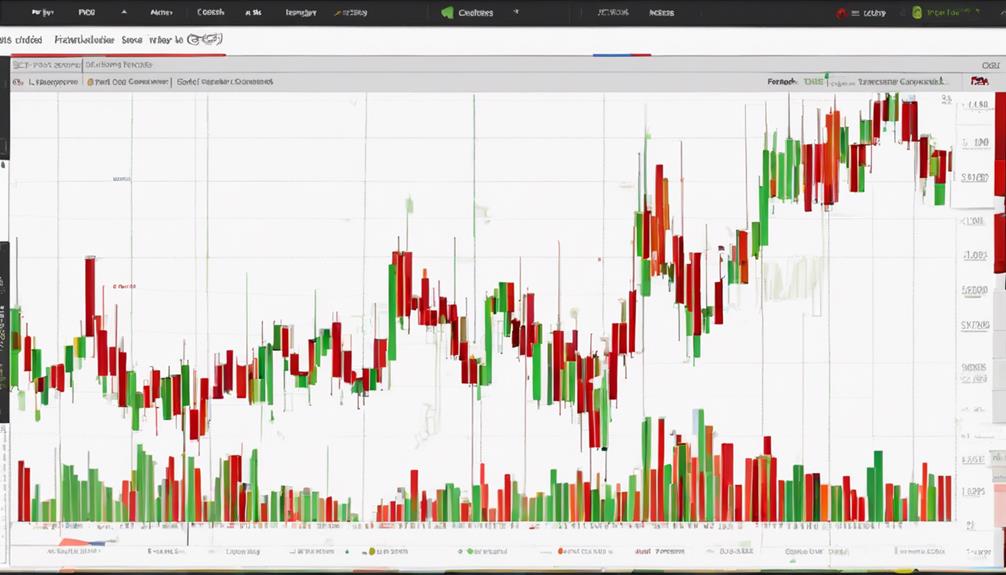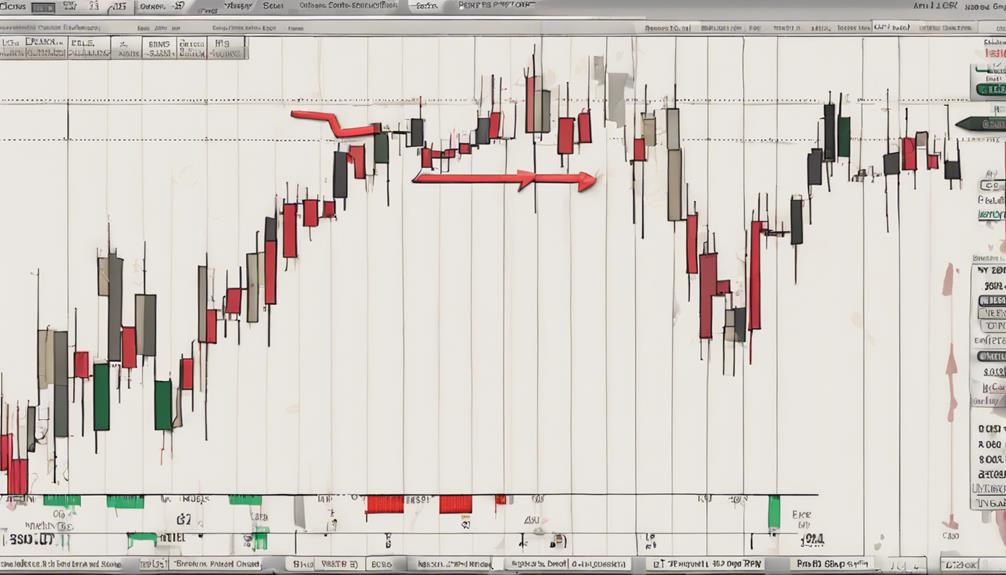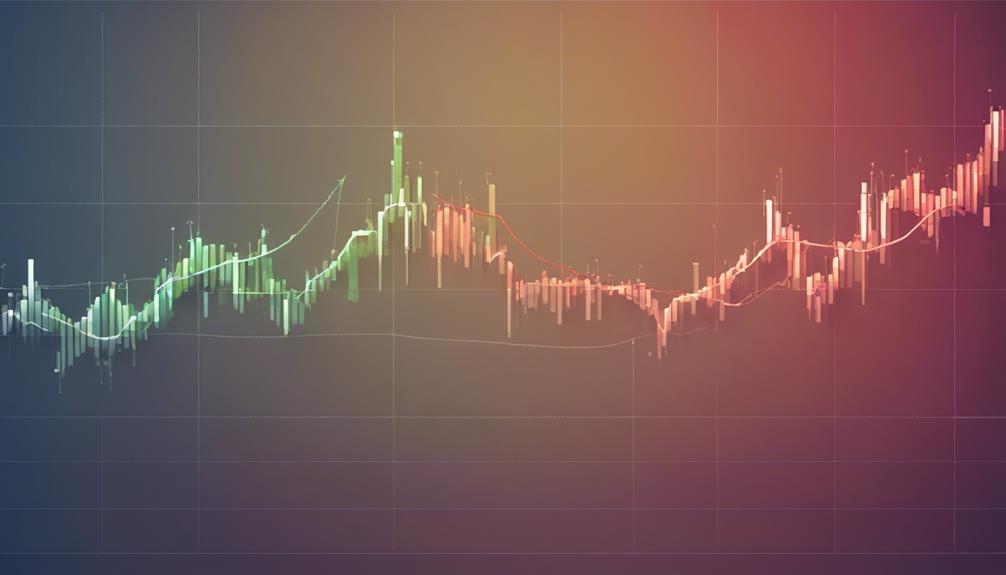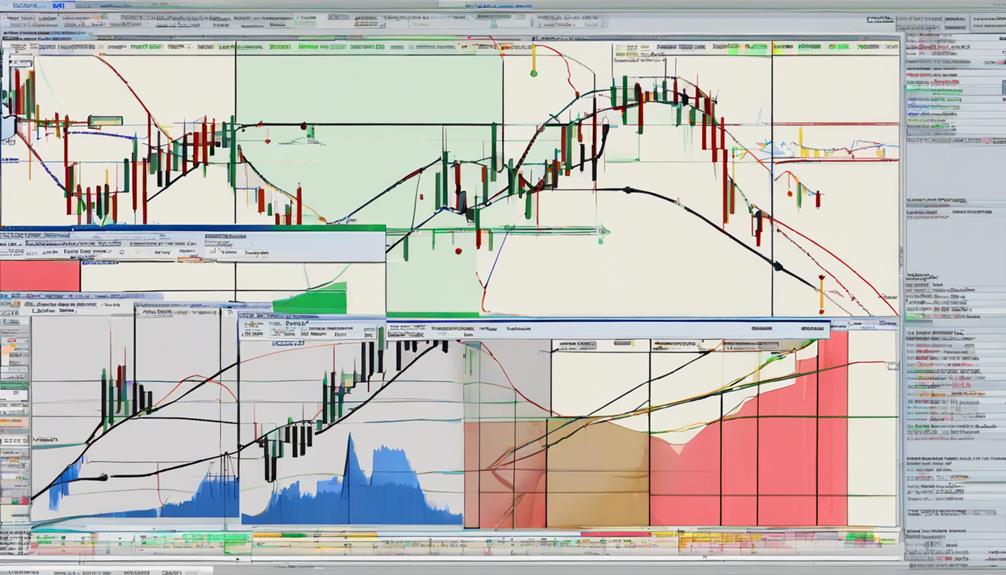Within the realm of day trading strategies, the ROC Indicator stands as a pivotal tool for traders navigating the complexities of the market. Understanding the nuances of this indicator can potentially unlock valuable insights into market momentum and trend dynamics.
By exploring the intricacies of the ROC Indicator and its practical applications, traders can enhance their decision-making processes and potentially optimize their trading outcomes.
As we delve deeper into the intricacies of this day trading strategy guide, a wealth of opportunities and strategies awaits for those keen on harnessing the power of the ROC Indicator in their trading endeavors.
Understanding the ROC Indicator
The ROC Indicator, a pivotal tool in day trading analysis, provides valuable insights into price movements by quantifying the percentage change between the current price and a previous period. Also known as Rate of Change, this technical analysis tool assists traders in gauging momentum and trend strength in the market.
By oscillating above and below a zero-level midpoint, the ROC Indicator showcases the velocity at which prices are changing. Positive values indicate price appreciation, while negative values signify price depreciation.
Understanding the ROC Indicator is essential for day traders as it aids in identifying potential entry and exit points based on price action. Incorporating ROC into a trading strategy allows traders to react promptly to changing market conditions.
Calculating the Rate of Change

A fundamental aspect of utilizing the ROC Indicator in day trading strategies is accurately calculating the Rate of Change. This calculation involves comparing the current closing price with the closing price N periods ago, subtracting the latter from the former, dividing this difference by the closing price N periods ago, and then multiplying the result by 100 to express it as a percentage.
The N value, typically set at 12 days for standard analysis, determines the comparison periods used in the ROC calculation. Positive ROC values indicate rising prices, signaling positive momentum, while negative ROC values suggest falling prices. ROC helps traders interpret the speed of price changes and momentum shifts in the market, assisting in identifying trends.
Understanding how to calculate ROC is essential for implementing effective day trading strategies, as it provides valuable insights into market dynamics and assists in decision-making processes to capitalize on trading opportunities.
Implementing ROC Indicator in Trading

Utilizing the ROC Indicator in trading strategies offers traders a valuable tool for gauging momentum and trend shifts based on percentage changes in price over specific periods. This technical momentum indicator helps traders identify accelerating or slowing trends by analyzing the direction and magnitude of price changes.
A ROC above the zero line indicates positive momentum, while a ROC below the zero line signals negative momentum. Traders can enhance their analysis by using moving averages in conjunction with ROC to confirm trend signals. It is essential to be aware of the limitations of ROC, such as whipsaws and false divergences, to effectively implement it in trading strategies.
Benefits of ROC Trading Strategy

Enhancing trading analysis with the ROC indicator provides valuable insights into short-term momentum shifts and stock performance potential. When considering the benefits of the ROC Trading Strategy, traders can expect:
- Identification of Short-Term Momentum Shifts: ROC helps in pinpointing rapid changes in stock prices, enabling traders to capitalize on short-term trends.
- Selection of High Momentum Stocks: By analyzing the rate of change in stock prices N periods ago, traders can identify stocks with positive momentum likely to outperform.
- Complementary Analysis with Other Indicators: ROC works in synergy with indicators like RSI and William's %R to offer a comprehensive view of market conditions.
- Prediction of Overbought and Oversold Conditions: ROC can indicate when a stock is overbought or oversold, helping traders anticipate potential reversals and adjust their strategies accordingly.
Understanding these benefits equips traders with the tools to make informed decisions and forecast future market movements effectively.
Advanced ROC Trading Techniques

Building upon the benefits of the ROC Trading Strategy, advanced ROC trading techniques incorporate sophisticated tools like ROC trend lines and Bollinger Bands to refine trade entry points and enhance decision-making processes.
Traders can use ROC trend lines to identify potential buy and sell signals based on the indicator's momentum. By combining Bollinger Bands with ROC signals, traders can gain a more comprehensive view of price changes and potential entry or exit points.
Additionally, ROC divergence, where the price trend differs from the ROC indicator's trend, can signal potential reversals or continuations in the market. Utilizing ROC as a momentum oscillator can help traders gauge the strength of price movements and make informed trading decisions.
It is crucial for traders to understand the intricacies of ROC and its advanced trading techniques to avoid false signals and maximize the effectiveness of this technical indicator in their trading strategies. By incorporating these advanced ROC trading techniques, traders can improve their ability to interpret market trends and execute successful trades.
What are the benefits of using the ROC indicator in day trading?
The ROC indicator in forex trading can be a valuable tool for day traders. It helps to identify potential trends and reversals in the market, allowing traders to make more informed decisions. By using the ROC indicator, traders can capitalize on opportunities for profit and minimize potential losses.
Frequently Asked Questions
How Do You Trade With ROC Indicator?
Trading with the ROC Indicator involves utilizing percentage change in price to gauge momentum and potential price movements. Traders interpret positive values as bullish signals and negative values as bearish, aiding in decision-making for short-term and long-term strategies.
What Is the Most Accurate Indicator for Day Trading?
One of the most accurate indicators for day trading is the Relative Strength Index (RSI). It measures the speed and change of price movements, aiding in identifying overbought and oversold conditions for timely trading decisions.
Is ROC a Leading Indicator?
Yes, ROC is a leading indicator in day trading. It helps traders anticipate potential trend shifts by signaling changes in price momentum early. Analyzing ROC trends enables proactive decision-making, staying ahead of market shifts.
What Is the Difference Between ROC and RSI Indicator?
The Rate of Change (ROC) measures price speed, while the Relative Strength Index (RSI) compares recent gains to losses. ROC assesses percentage change, RSI focuses on momentum. ROC tracks acceleration, RSI identifies overbought/sold conditions. Both aid in trend analysis.
Conclusion
In conclusion, the ROC indicator serves as a valuable tool for day traders to analyze price momentum and trend shifts in the market.
By combining the ROC indicator with other technical analysis tools, traders can make informed decisions and capitalize on trading opportunities.
As the saying goes, 'knowledge is power', and mastering the ROC indicator can provide traders with the knowledge and insight needed to navigate the complexities of the dynamic trading environment successfully.
